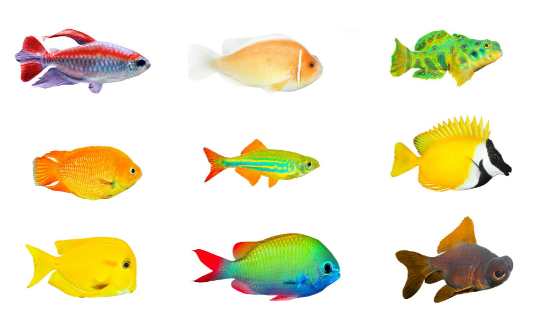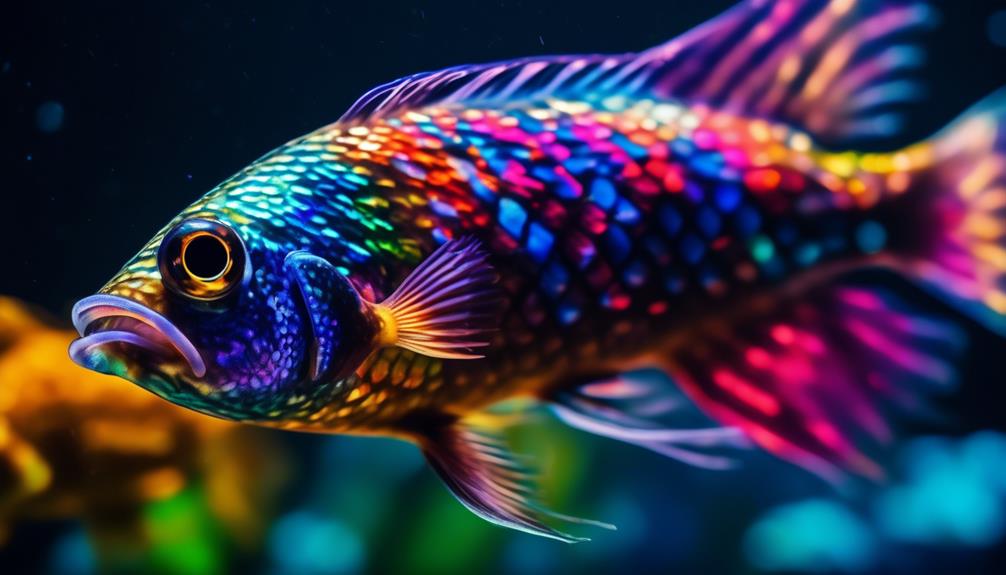
Are you searching for a captivating addition to your freshwater aquarium that will truly make a statement? Imagine a fish with shimmering blue-green scales and vibrant horizontal stripes of red and blue, like a living work of art. The Flagfish, specifically the American Flagfish, possesses such stunning beauty.
But there’s more to these fish than meets the eye. They also have a semi-aggressive temperament, which adds an intriguing dynamic to their presence in an aquarium. Curious to know more about their ideal tank mates, care requirements, and the secrets behind their striking colors?
Join us as we unravel the captivating world of the Flagfish and discover how to create a thriving environment for these remarkable creatures.
Key Takeaways
- Flagfish are native to Florida and belong to the pupfish family.
- The American Flagfish, in particular, has iridescent blue-green scales with horizontal stripes of red and blue on its body.
- Flagfish are semi-aggressive and prefer cool temperatures between 66F and 72F.
- They thrive in slightly alkaline water with a pH level between 6.7 and 8.2 and water hardness between 6 and 20 KH.
Flagfish Aquarium Requirements
To create an optimal environment for Flagfish, you’ll need a small aquarium that requires weekly care and is suitable for freshwater tanks. Flagfish are small in size, so a smaller tank will suffice. It’s important to provide them with enough space to swim in the mid-range region of the tank.
Make sure the tank is properly maintained and cleaned on a weekly basis to ensure the health and well-being of the Flagfish. Additionally, ensure that the water conditions are suitable for freshwater tanks. Flagfish thrive in slightly alkaline water, so maintaining a pH level between 6.7 and 8.2 is crucial. Keep the water temperature between 66F and 72F and the water hardness between 6 and 20 KH.
Flagfish Tank Mates
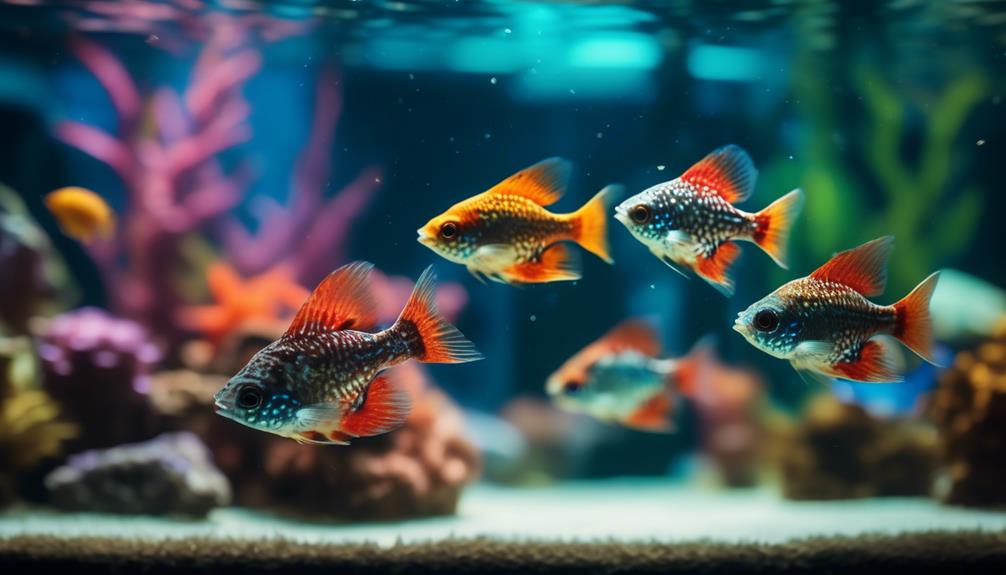
Flagfish make great tank mates for a variety of fish species, thanks to their compatibility and versatile nature. When choosing tank mates for your flagfish, consider the following options:
- Minnows: These small, peaceful fish are a good choice as they can coexist harmoniously with flagfish.
- Characins: Fish like tetras and rasboras are fast-swimming and can keep up with the active nature of flagfish.
- Fast-swimming fish: Species such as danios and barbs can swim quickly, which helps them avoid any potential conflicts with flagfish.
- Narrow-bodied fish: Fish with slender bodies, such as livebearers and pencilfish, are less likely to trigger any aggression from flagfish.
- Compatible with other species: Flagfish can generally get along well with other peaceful community fish, as long as their tank mates aren’t overly aggressive.
Flagfish Temperament and Water Conditions
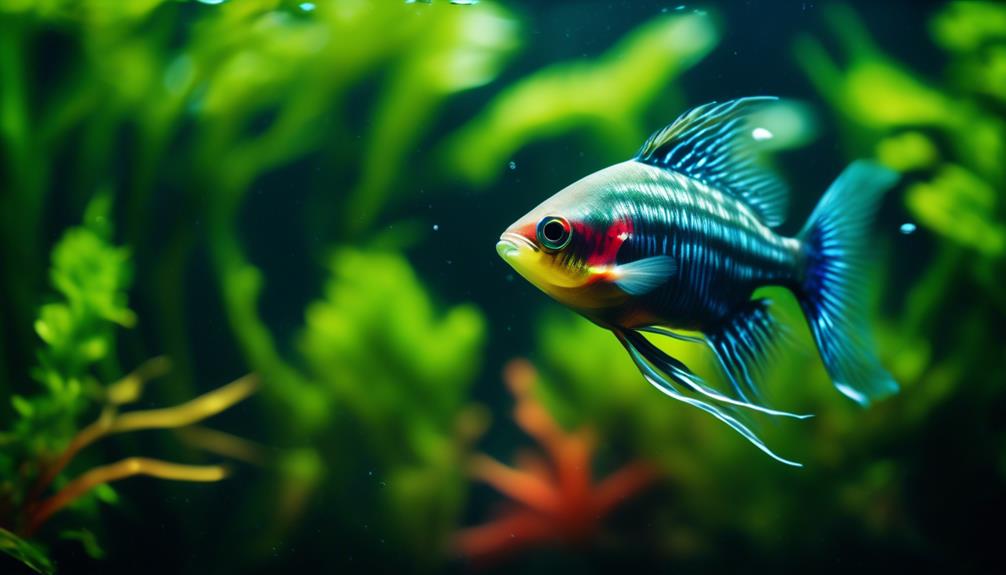
When considering the temperament and water conditions for your flagfish, it’s important to note their semi-aggressive nature and preference for cool, slightly alkaline water.
Flagfish have a general description of being semi-aggressive, which means they may display territorial behavior towards other fish in the tank. To ensure a harmonious environment, it’s recommended to keep them with fish that are fast-swimming or narrow-bodied.
In terms of water conditions, flagfish thrive in cool temperatures ranging from 66F to 72F. They also prefer slightly alkaline water with a pH between 6.7 and 8.2, and a water hardness between 6 and 20 KH.
Maintaining these specific water conditions will help your flagfish stay healthy and happy in their aquarium habitat.
Flagfish Origins and Coloration
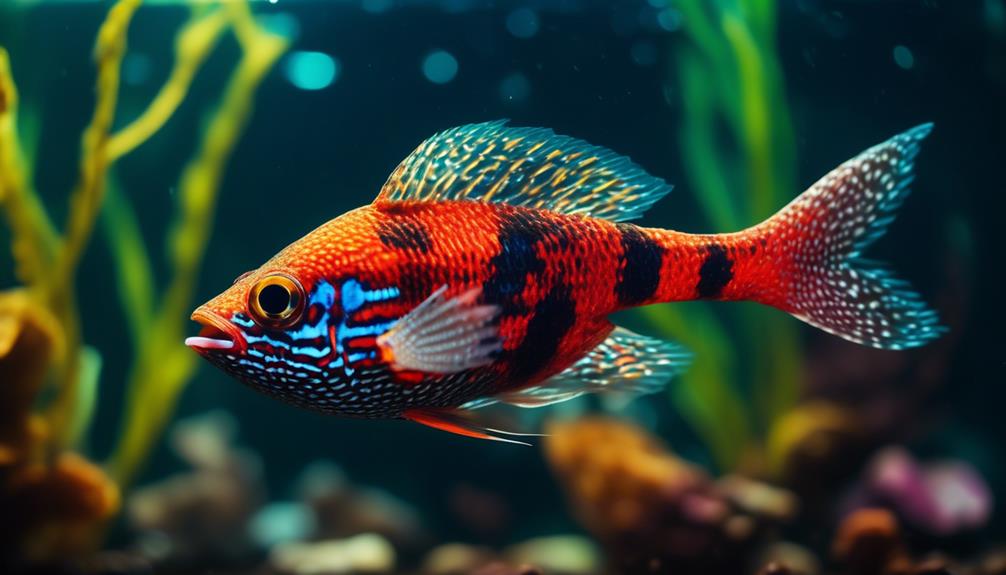
Native to Florida, the Flagfish belongs to the pupfish family and displays stunning coloration. The origins of the Flagfish can be traced back to the freshwater habitats of Florida. This vibrant fish is known for its eye-catching colors and patterns.
Here are some key features of the Flagfish’s origins and coloration:
- Native to Florida
- Belongs to the pupfish family
- Some species are colorful
- American Flagfish has iridescent blue-green scales
- Horizontal stripes of red and blue on the body
The Flagfish’s striking coloration makes it a popular choice among aquarium enthusiasts. Its vibrant hues and unique patterns add a splash of color to any tank. Whether it’s the iridescent blue-green scales of the American Flagfish or the bold stripes of red and blue, the Flagfish is sure to captivate anyone who lays eyes on it.
Flagfish Care and Feeding
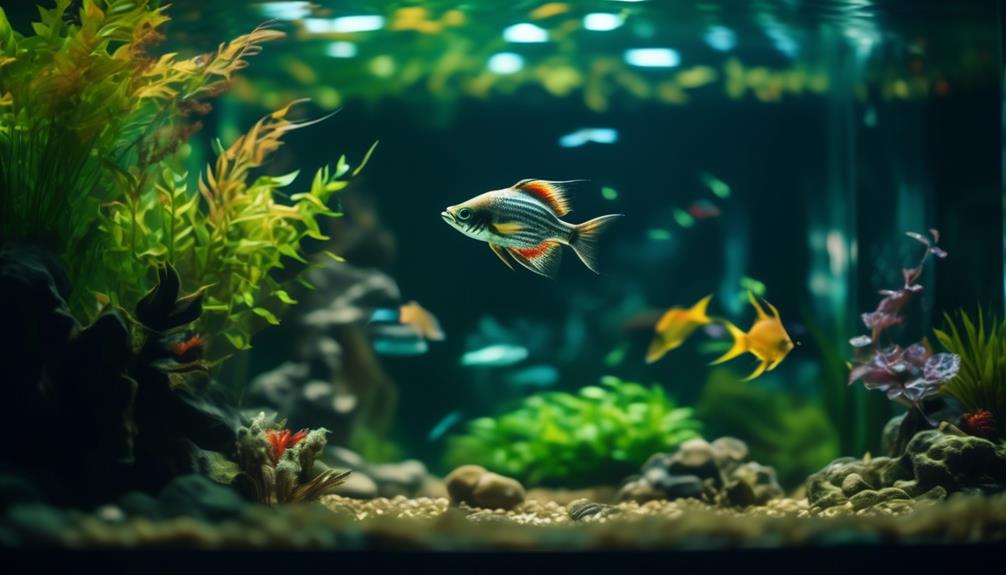
Now let’s focus on how to properly care for and feed the Flagfish in your aquarium.
To ensure the well-being of your Flagfish, it’s important to provide them with a suitable environment. They thrive in densely planted waters with a temperature range between 66°F and 72°F. The pH level should be maintained between 6.7 and 8.2, with water hardness between 6 and 20 KH.
When it comes to feeding, Flagfish aren’t picky eaters. They primarily feed on decaying plant matter and algae, but they also readily accept other foods such as flakes, pellets, and live or frozen brine shrimp. It’s recommended to provide a balanced diet to ensure their nutritional needs are met.
Suitable Tank Size
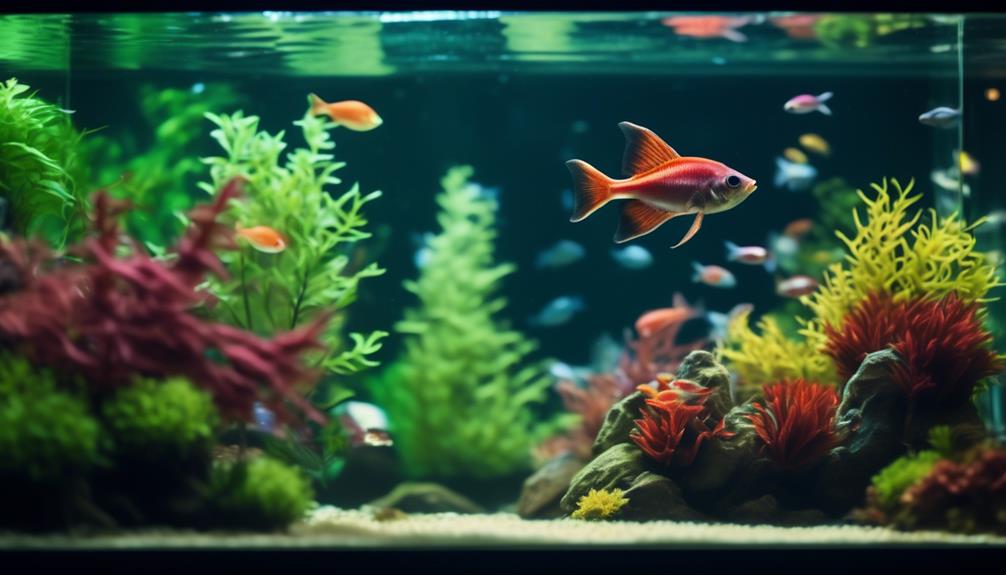
To ensure the well-being of your Flagfish, it’s crucial to select an appropriate tank size. Here are some key considerations for choosing the right tank size for your Flagfish:
- Optimal tank size: Flagfish are small in size, so a smaller aquarium is suitable for them. A tank with a capacity of at least 10 gallons is recommended.
- Swimming space: Flagfish prefer a mid-range swimming region, so choose a tank that provides enough space for them to swim freely.
- Habitat requirements: Flagfish thrive in freshwater tanks, so ensure that the tank can accommodate their specific water conditions, such as temperature, pH level, and water hardness.
- Tank mates: Consider the number and compatibility of tank mates when selecting the tank size. Make sure there’s enough space for other fish to coexist peacefully with the Flagfish.
- Maintenance: A smaller tank size requires less maintenance, making it easier to clean and care for your Flagfish.
Weekly Care Routine
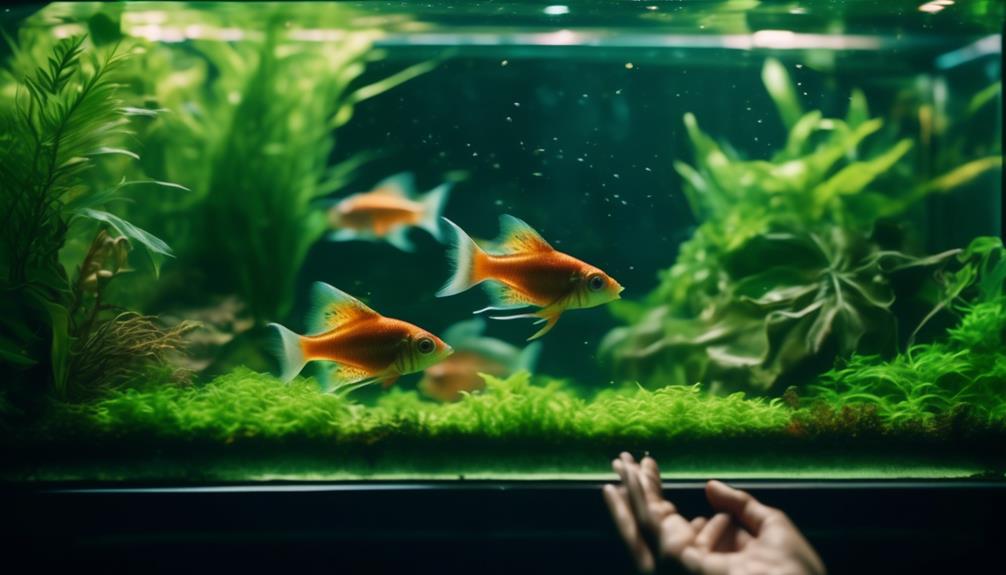
For optimal health and well-being of your Flagfish, it’s important to establish a consistent weekly care routine.
Start by performing a water change of about 20% every week to maintain water quality. Use a siphon to remove any debris from the substrate and clean the filter to prevent buildup.
Test the water parameters regularly using a reliable test kit and adjust as necessary. Additionally, trim any dead or dying plant leaves to maintain a clean and aesthetically pleasing environment.
Feed your Flagfish a varied diet consisting of high-quality flakes, pellets, and frozen or live foods. Remember to remove any uneaten food to prevent water pollution.
Finally, observe your fish closely for any signs of illness or stress and take appropriate actions promptly.
Freshwater Tank Compatibility
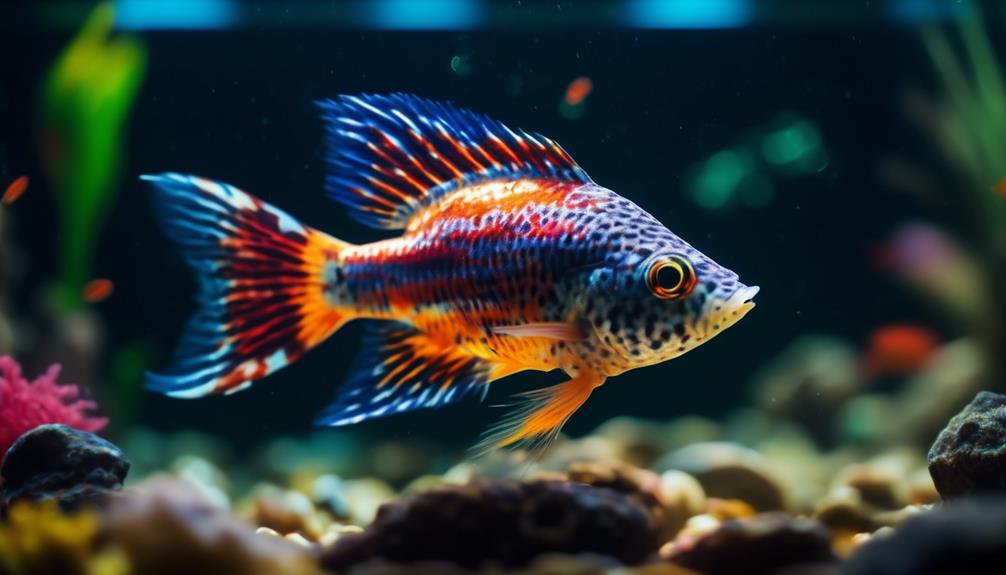
Establishing a compatible freshwater tank environment is crucial for the well-being and harmonious coexistence of your Flagfish. To ensure a successful tank setup, consider the following factors:
- Tank size: Flagfish require a small aquarium, as they’re small in size themselves.
- Tank mates: Choose tank mates that are fast-swimming and narrow-bodied, such as minnows and characins.
- Temperament and water conditions: Flagfish have a semi-aggressive temperament and thrive in cool, slightly alkaline water. Make sure to maintain specific water conditions for their well-being.
- Origins and coloration: Flagfish are native to Florida and display colorful features, such as the American Flagfish’s iridescent blue-green scales and horizontal stripes of red and blue.
- Care and feeding: Flagfish inhabit densely planted waters and feed on decaying plant matter and algae, along with other foods.
Size and Swimming Habits
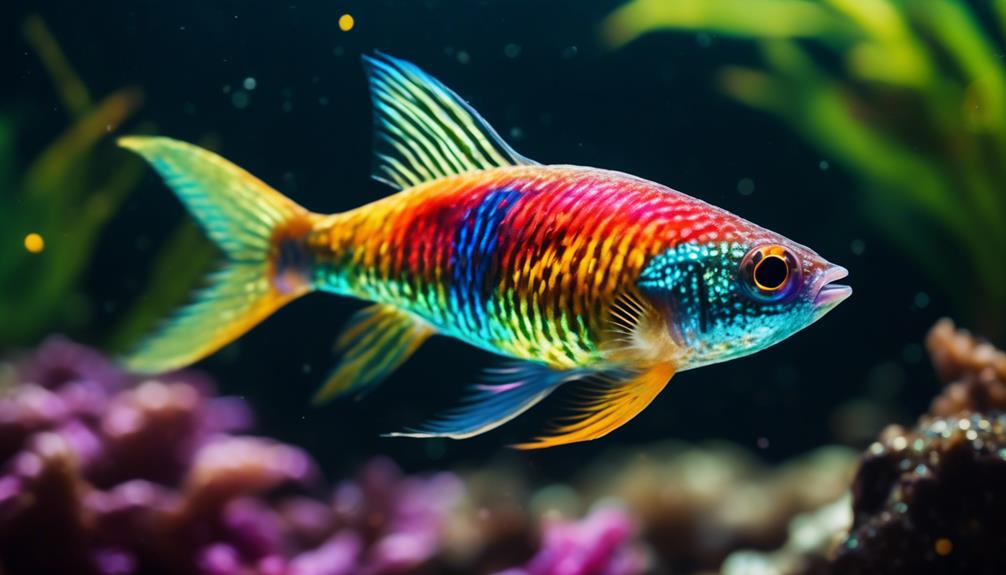
Flagfish are small in size and have unique swimming habits. Despite their small stature, they are known for their energetic and active swimming style. They dart around the aquarium with agility, making quick turns and movements. Their swimming habits add to their overall appeal, making them an interesting species to observe in an aquarium setting.
To provide a clearer picture of their size and swimming habits, here is a table:
| Size | Swimming Habits |
|---|---|
| Small | Energetic |
| Agile | Active |
| Quick turns | Darting movements |
This table showcases the flagfish’s size and the way they navigate through the water. Their small size allows them to maneuver easily, while their energetic and active swimming habits make them a captivating addition to any aquarium.
Recommended Tank Mates
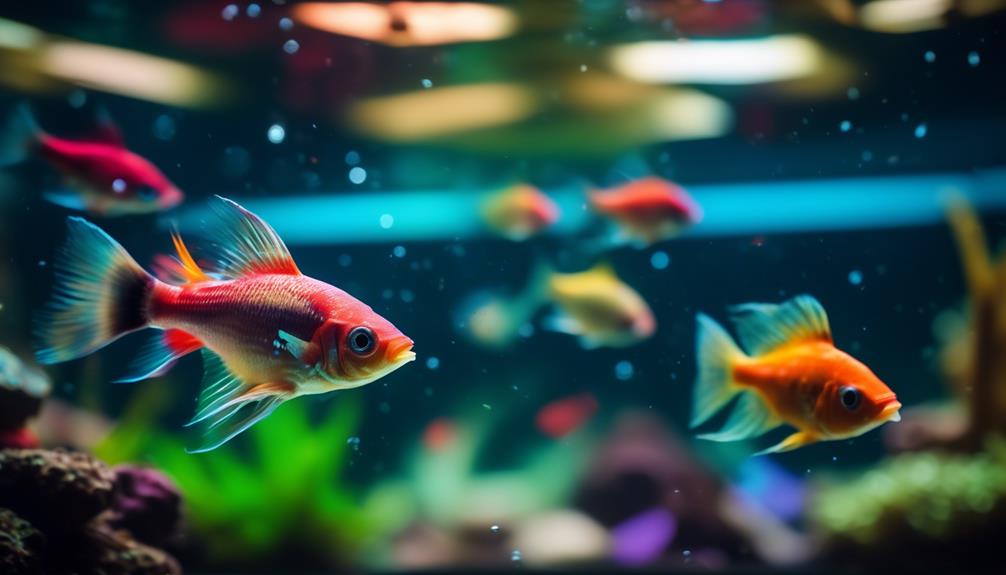
When considering tank mates for your flagfish, it’s important to choose species that are compatible with their semi-aggressive temperament and thrive in similar water conditions. Here are five recommended tank mates for your flagfish:
- Minnows: These small, active fish can keep up with the flagfish’s movements and are compatible with their semi-aggressive nature.
- Characins: Fast-swimming fish like tetras and rasboras can make good tank mates for flagfish, as they’re agile and can avoid any potential aggression.
- Fast-swimming fish: Species like danios and barbs can match the flagfish’s speed and are less likely to be targeted as potential rivals.
- Narrow-bodied fish: Fish with slim bodies, like guppies and endlers, can coexist peacefully with flagfish as they don’t pose a threat.
- Compatible with other species: Look for fish that have a reputation for being peaceful and getting along well with others to ensure a harmonious tank environment.
Temperament and Water Parameters
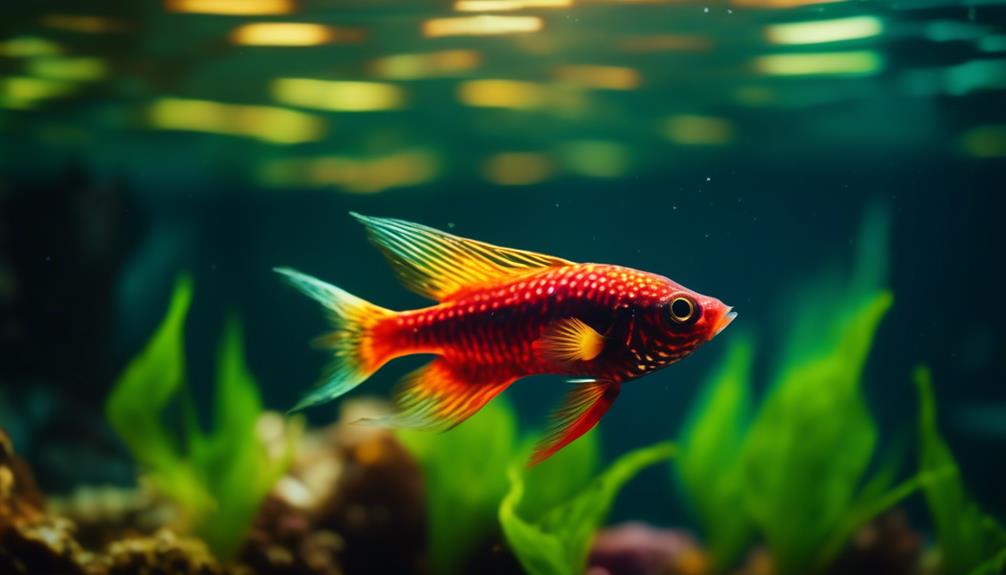
To ensure a harmonious tank environment, it’s important to understand the temperament and water parameters that are ideal for flagfish.
Flagfish have a semi-aggressive temperament, so it’s crucial to choose tank mates wisely.
They prefer cool, slightly alkaline water conditions. The temperature should range between 66F and 72F, with a pH level between 6.7 and 8.2. Water hardness should be between 6 and 20 KH. These specific water conditions are essential for the flagfish to thrive.
It’s also worth noting that flagfish are small in size and prefer a mid-range swimming region.
Native Habitat and Family
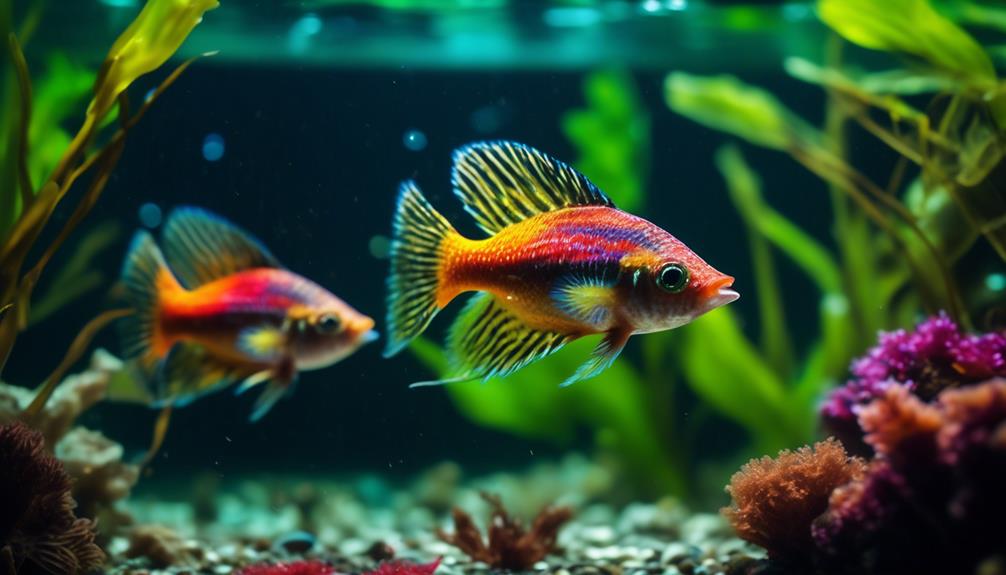
Native to the diverse habitats of Florida, the Flagfish belongs to the pupfish family. This small, colorful fish can be found in various freshwater ecosystems in the state. Here are some key points about its native habitat and family:
- Native to Florida
- Belongs to the pupfish family
- Found in diverse habitats
- Thrives in freshwater ecosystems
- Can be seen in lakes, ponds, and marshes
The Flagfish’s native habitat provides it with ample opportunities to display its vibrant colors and aggressive behavior. Being a member of the pupfish family, it shares certain characteristics and behaviors with other species in the same family.
Understanding the native habitat and family of the Flagfish can help aquarium enthusiasts create suitable tank environments and care for these fascinating fish.
Colorful Flagfish Species
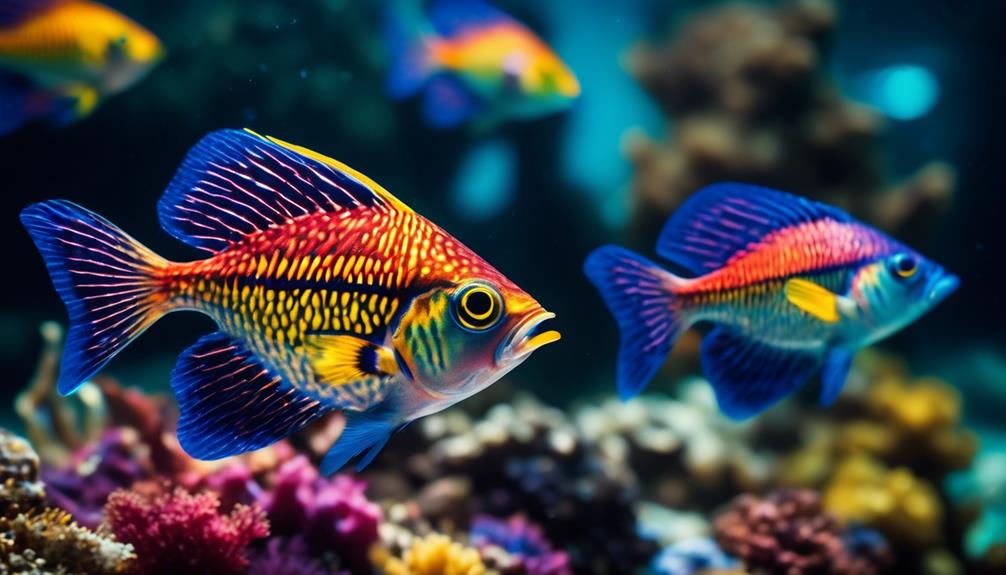
The Flagfish’s vibrant colors and striking patterns make it a captivating addition to any aquarium. There are several species of Flagfish that exhibit beautiful and colorful markings.
One such species is the American Flagfish, which has iridescent blue-green scales and horizontal stripes of red and blue on its body. Another colorful species is the Everglades Flagfish, which features bright orange and yellow hues. The Florida Flagfish is known for its stunning combination of yellow, blue, and black colors.
These colorful Flagfish species add a vibrant and eye-catching element to any aquarium, making them a popular choice among fish enthusiasts. Whether you’re a beginner or an experienced aquarist, adding a colorful Flagfish to your aquarium will surely enhance its visual appeal.
Feeding Habits and Water Parameters
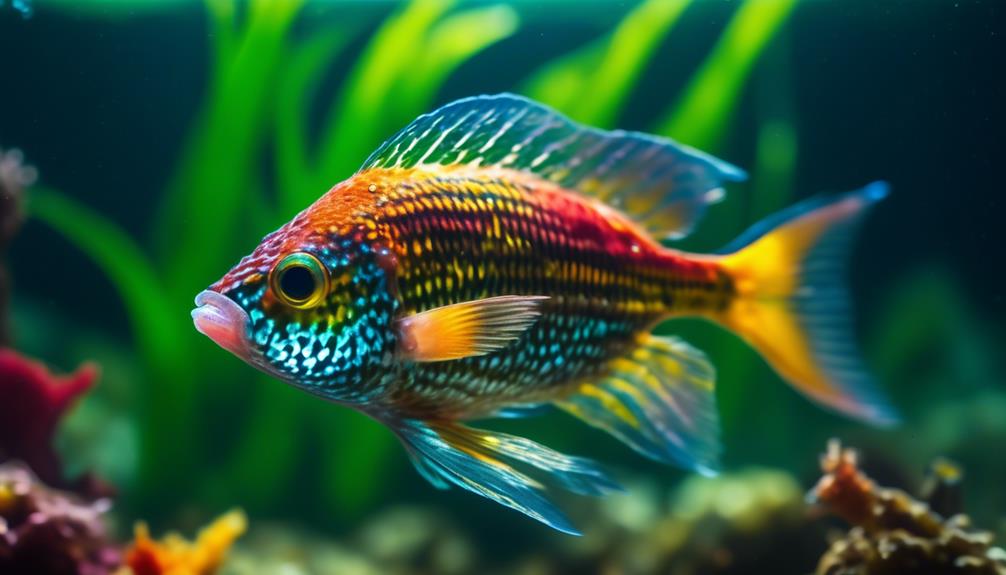
When it comes to the Flagfish’s feeding habits and water parameters, there are several important factors to consider.
- Diet: The Flagfish feeds on decaying plant matter, algae, and other foods. It’s an omnivorous species, so a varied diet is essential for its overall health and well-being.
- Water Temperature: The ideal temperature range for the Flagfish is between 66°F and 72°F. It’s important to maintain a stable temperature within this range to ensure the fish remains healthy and active.
- pH Level: The Flagfish prefers slightly alkaline water, with a pH level between 6.7 and 8.2. Regular monitoring and adjustment of the water’s pH level is crucial to create a suitable environment for the fish.
- Water Hardness: The recommended water hardness for the Flagfish is between 6 and 20 KH. This range ensures that the water contains the necessary minerals for the fish’s growth and development.
- Feeding Schedule: The Flagfish should be fed small amounts of food multiple times a day. This helps simulate their natural feeding patterns and prevents overeating.
Frequently Asked Questions
What Is the Recommended Tank Size for a Flagfish Aquarium?
The recommended tank size for a flagfish aquarium is small. It requires weekly care and is suitable for freshwater tanks. Keep in mind its small size and mid-range swimming region when setting up the tank.
How Often Should I Perform the Weekly Care Routine for My Flagfish?
You should perform the weekly care routine for your flagfish once a week. It’s important to keep up with regular maintenance to ensure the health and well-being of your fish.
Can Flagfish Be Kept in Saltwater Tanks or Are They Only Suitable for Freshwater Tanks?
Flagfish are only suitable for freshwater tanks and cannot be kept in saltwater tanks. They thrive in cool, slightly alkaline water with specific conditions like pH between 6.7 and 8.2.
Are Flagfish Known to Be Aggressive Towards Other Fish Species?
Yes, flagfish are known to be semi-aggressive towards other fish species. They prefer cool, slightly alkaline water and have specific care requirements. They can thrive in a small freshwater tank with suitable tank mates.
Are There Any Other Colorful Flagfish Species Besides the American Flagfish Mentioned in the Article?
No, there are no other colorful flagfish species mentioned in the article.
What Makes the Flagfish Aggressive and Colorful?
The hawkfish chronicles article by marine biologists highlights what makes the flagfish aggressive and colorful. The study reveals that the flagfish’s territorial nature contributes to its aggressiveness, especially during breeding season. Its vibrant colors also help it attract mates and deter predators in its natural habitat.
Conclusion
In conclusion, the Flagfish is an incredible addition to any freshwater aquarium. With its vibrant colors and semi-aggressive nature, it’s sure to capture your attention.
By providing the right tank mates and creating the ideal environment, you can ensure that your Flagfish thrives and remains happy.
With proper care and feeding, these beautiful fish will continue to mesmerize and bring life to your aquarium.
Don’t miss out on the opportunity to have the colorful and captivating Flagfish in your collection.




